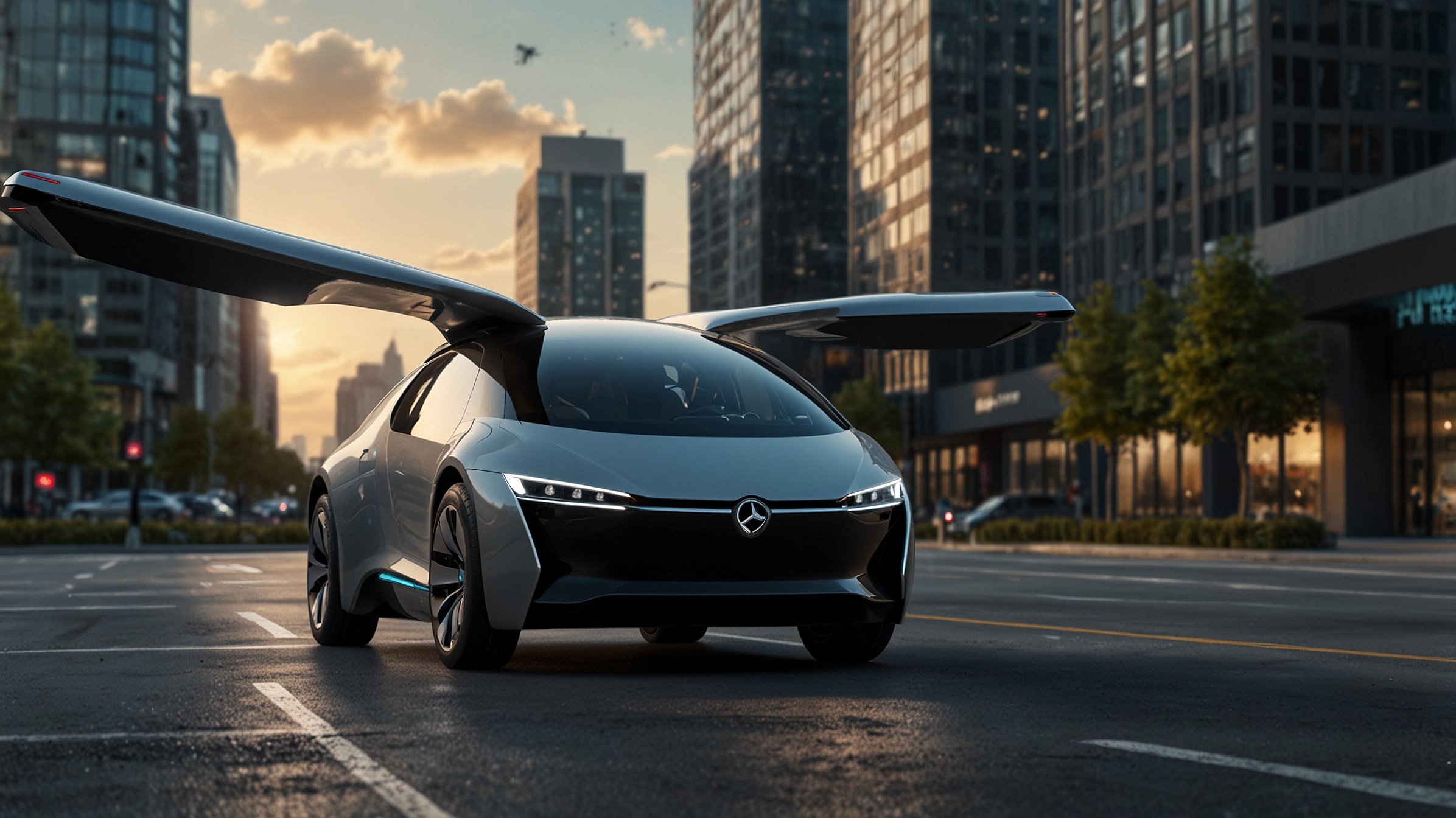Not long ago, flying cars were the stuff of sci-fi fantasies—images reserved for futuristic cartoons, dystopian films, or tech dreamers. But today, this long-imagined vision of zipping above congested streets is inching closer to reality. From Silicon Valley startups to global aerospace giants, the race is on to bring Urban Air Mobility (UAM) into mainstream life. And while flying cars won’t replace your daily commute overnight, they’re much closer than most people think.
What Exactly Is Urban Air Mobility?
Urban Air Mobility refers to a network of small, highly automated aircraft designed to operate within urban and suburban environments. Think electric vertical takeoff and landing (eVTOL) vehicles—machines that can lift off like helicopters, cruise like planes, and ideally, land right near your office or home.
Unlike traditional helicopters, eVTOL aircraft are designed to be quieter, safer, and more sustainable, thanks to electric propulsion and advanced aerodynamics. UAM systems aim to alleviate traffic, reduce travel times, and eventually operate autonomously, connecting cities and suburbs through a web of airways.
In short: It’s not just about flying cars—it’s about rethinking the very fabric of urban transportation.
Who’s Building Them?
The list of companies developing flying vehicles is growing fast. Key players include:
- Joby Aviation: Backed by Toyota and partnered with Delta, Joby is testing quiet eVTOL aircraft designed for urban commutes with a range of 150+ miles.
- Archer Aviation: Another major player focused on short-haul city-to-airport routes, with United Airlines as a strategic partner.
- Lilium: A German startup developing a sleek jet-powered eVTOL with a unique “ducted fan” design.
- Volocopter: Based in Germany, it’s already completed public test flights and focuses on two-seat, city-ready designs.
- Supernal (a Hyundai company): Aiming to launch commercial operations by 2028 with a strong focus on integration into smart city infrastructure.
Legacy companies like Airbus, Boeing, and Embraer are also investing heavily, while tech firms like Uber (through Elevate) have laid early groundwork.
How Close Are We Really?
The technology is already here. Several prototypes have flown successfully, with some achieving full piloted flights and certifications for limited use. However, scaling these operations to meet the demands of daily urban transportation is a complex challenge involving engineering, infrastructure, and regulation.
Experts forecast commercial UAM services could launch in select cities by 2025 to 2030, beginning with airport shuttle routes and VIP transport. Mass adoption will take longer, but the pace of development suggests that flying vehicles could be as accessible as ride-hailing apps within two decades.
What Needs to Happen First?
- Certification and Safety
Regulatory bodies like the FAA (U.S.) and EASA (Europe) must certify these vehicles under stringent safety standards—similar to those applied to commercial aircraft. Several companies are already in advanced stages of the certification process. - Infrastructure Development
“Vertiports” (designated landing and takeoff pads) will need to be built on rooftops, parking structures, and transit hubs. That requires partnerships with cities, airports, and property developers. - Air Traffic Management
Low-altitude airspace will become more crowded. Air traffic control systems will need upgrades—potentially involving autonomous, AI-based flight routing to manage hundreds or thousands of daily flights safely. - Public Acceptance
Trust will be essential. Communities must feel confident in the safety, noise control, and environmental benefits of UAM. Pricing will also need to be competitive—ideally similar to today’s premium taxi or rideshare services.
Will Flying Cars Replace Traditional Cars?
Unlikely—at least not in the short term. UAM is designed to complement existing transportation networks, not replace them. Think of it like an express lane in the sky—ideal for specific use cases like:
- Beating rush-hour traffic between city centers and airports
- Emergency medical transport
- Connecting underserved suburban areas
- Corporate or luxury travel
As technology improves and costs drop, these services could trickle down to middle-class users, especially in cities with extreme congestion.
Environmental Impact
Unlike helicopters, most eVTOLs are fully electric and produce zero emissions during flight. That said, their environmental impact will depend on the energy source used to charge them and how often they’re deployed.
Noise pollution is another major concern, and developers are focusing on ultra-quiet propulsion systems. So far, test flights suggest that eVTOLs may be far less disruptive than current helicopters—potentially as quiet as a dishwasher from the ground.
The Road (or Sky) Ahead
Urban air mobility is still in its infancy, but it’s not science fiction anymore. Billions of dollars in investment, ongoing pilot programs, and government support are accelerating development.
In 2024, Joby, Archer, and Volocopter are running demo flights and infrastructure pilots in cities like New York, Los Angeles, and Paris. The 2024 Olympics in Paris even plan to include public flying taxi demos.
As cities continue to grow and traffic worsens, flying cars won’t just be a luxury—they may become a necessary evolution in transportation. The shift won’t happen overnight, but the groundwork is already being laid.
Final Thoughts
Flying cars may not be parked in your garage just yet, but make no mistake—they’re on approach. From futuristic dreams to real-world prototypes, urban air mobility is poised to change how we move, live, and even design our cities.
The next time you’re stuck in traffic, look up. The future of commuting might just be hovering overhead.





